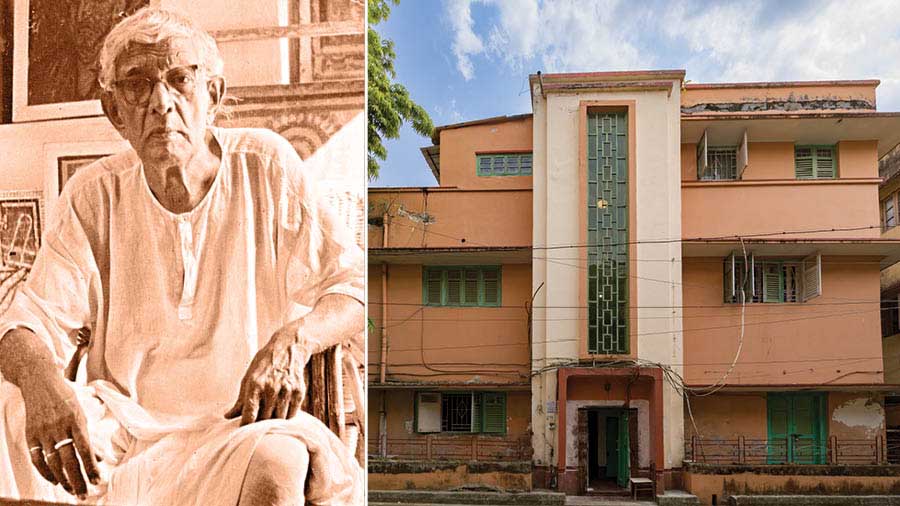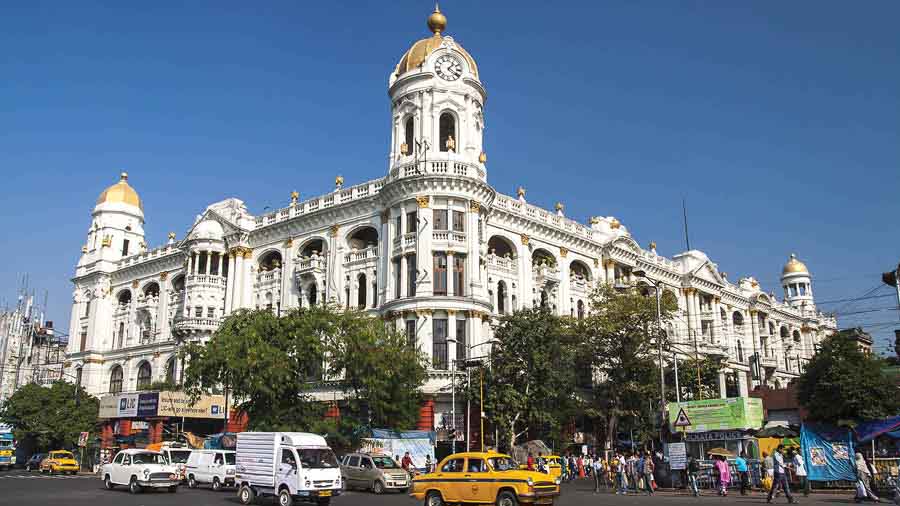The most daring heritage conservation transaction in Calcutta this year was the decision of Delhi Art Gallery (DAG) to acquire, restore and repurpose the Ballygunge home of artist Jamini Roy.
The decision was challenging for various reasons.
One, DAG is from Delhi and its decision to acquire a property was different from acquiring a canvas as the property cannot be transferred to another city. Two, the artist, absent for more than 50 years, needs to be reintroduced to contemporary consciousness. Three, there continues to be an iffiness on whether such an investment in Kolkata can be economically sustainable. Four, there is no such model (private personality-centric museum) in India, so the exercise represents a laboratory experiment. Five, the repurposing represents the coming together of different activities under one roof (permanent gallery and café being two) with different economic fundamentals.

DAG may be owning possibly the largest collection of Jaminis, making the museum a shelf-space that could be showcased and transacted electronically or physically
I am curious. Why would DAG have ventured into an unprecedented heritage conservation project that warranted a long-term commitment?
Because – as it appears to me – the very reasons I have listed as challenges could be re-interpreted as positives. Since Jamini Roy was a multi-faceted artist with a distinctive personality, there is an emotional foundation on which his life can be ‘re-created’. If curated successfully, the perception of Jamini Roy can become a bigger property than the reality that he lived.
The artist’s home across 7000 sq ft provides a platform where the overall experience – ‘experience’ is the critical word – can be seamlessly curated from one room (or floor) to another. The fact that it has not been attempted in India could be precisely why its time has come and what better place than Calcutta (relatively low cost metro city real estate plus possibly the richest national art pool).
The property’s location and hinterland are where the rich and famous live, which could graduate this into a proximate respect-enhancing rendezvous for the socially conscious (‘Ektu art dekhey nilam, tarpor coffee adda korlam’).
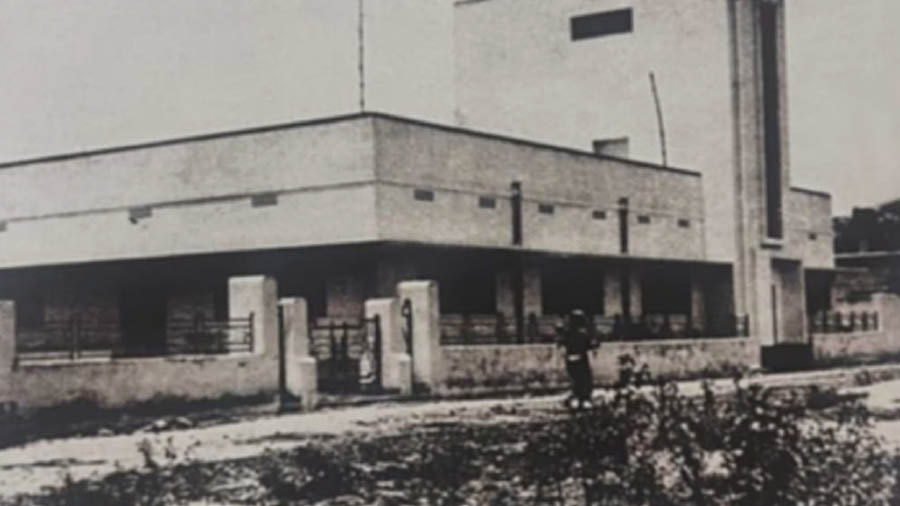
Roy did not live in a modest room or two; he lived in a two-storeyed structure across 7000 sq ft
This could be DAG’s way of bringing an international concept into India at possibly the lowest ‘mistake cost’ and examine its viability (at the lowest cost) before it can be transported to other cities. DAG may also be owning possibly the largest collection of Jaminis, making the museum a shelf-space (permanent collection housed on the first floor) that could be showcased and transacted electronically or physically. The fact that DAG would be showcasing Jamini’s works in a museum branded around the artist could potentially generate a premium (in stock market terms, we call this the price-earnings ratio), making the increment in DAG’s Jamini portfolio potentially larger than the price paid for the property in the first place.
The museum would also be DAG’s way of graduating artist profiles from the conventional sulaa-dene-wala leaflet that one picks up at art shows. In this case, the form would be the message; if a museum was curated around Jamini, it would predictably accommodate a range of his works drawn from the available domain; the prices quoted at the museum could serve as a transparent global benchmark of Jamini prices; it could also provide a two-way quote (sell and buy) for all Jamini works, creating liquidity the way a stock exchange works.
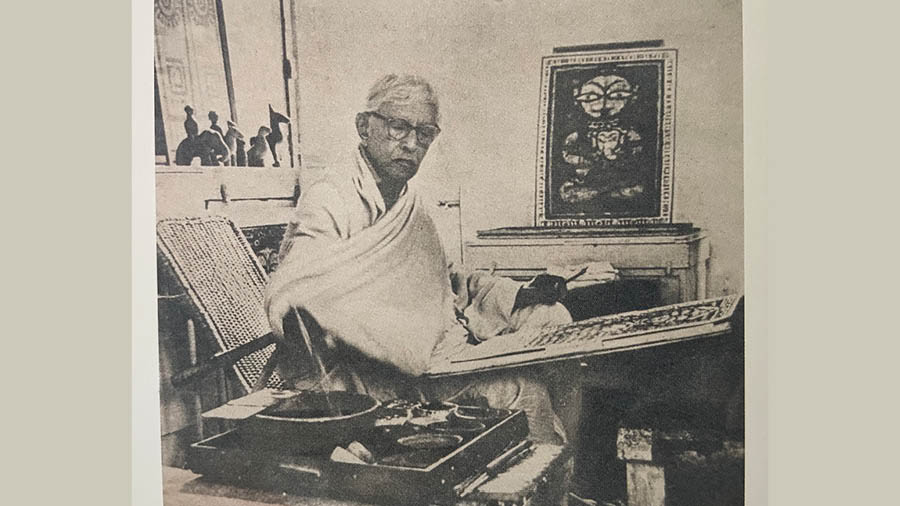
Jamini Roy scribbled painting concepts on whatever he found – newspapers, back of bills, exercise books and paper scraps
The museum could also serve as a larger platform on which to mount the life of Jamini Roy, the last frontier. Here, DAG has struck lucky; the legend did not live in a modest room or two; he lived in a two-storeyed structure across 7000 sq ft. The property was acquired without tenant encroachments; there are relatives who can still describe the room and the rest of the property as it was used by Jamini, providing the critical ‘software’ on which the museum application can be mounted.
The structure on 18/39 Jamini Roy Sarani (earlier Dihi Serampore Lane and Ballygunge Place East) was designed without an architect (‘nijer matha’). The floor was interrupted every few metres by a vertical indent, so anyone walking would need to remain alert enough to make walking adjustments (‘Maa bosundhoraar buker opore haatbe aar hochot khabe na, ta ki hoy?’). The mango tree under which he painted remains and could be used as a suitable garden prop.
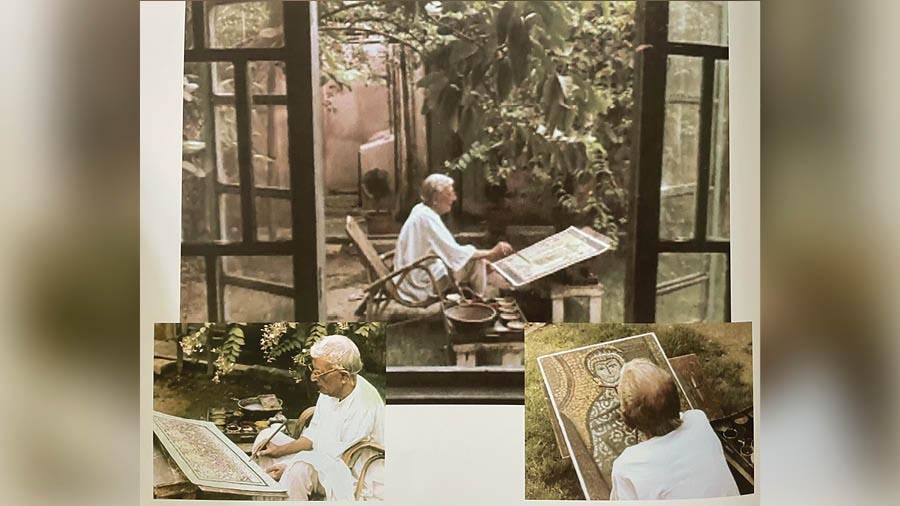
The mango tree under which he painted remains in the property
Jamini Roy scribbled painting concepts on whatever he found – newspapers, back of bills, exercise books and paper scraps. He painted from as early as 7am; the assistant Panchanan plucked garden flowers (jui and madhabilata) that would then be meticulously placed in the middle of the front of canvases placed on low stools across the perimeter of the studio. The breakfast would be boringly predictable (muri, batasha and doodh-chaa). He painted till the 1pm lunch. He ate from a cracked plate. The dupurer ghoom would be on a wooden plank angled at 45 degrees against a support; a bundle of clothes served as the pillow. After he had rested for an hour, Jamini Roy would rise to paint into the early evening. The only son who served as his personal assistant supervised his residential cottage industry, where originals were replicated and where a resident framer made artworks customer-ready.
Jamini Roy created a mystique. He remained ‘accessibly’ inaccessible. He never owned a phone. He was averse to making social rounds. He declined the invitation to travel to New Delhi to collect the Padma Bhushan. When asked by the Great Tagore to bring paintings to Santiniketan so that he could appraise his talent, Jamini (who must have been in his mid-forties) changed the subject. When MK Gandhi requested Jamini Roy to turn up at Hyderi Manzil in Beliaghata with a bundle of paintings, the painter did not respond. When Ms Gandhi expressed an interest in buying a few paintings with a promise to remit the cheque soon after, the painter probably ritually coughed, smiled and said you will soon forget me (which was a code for ‘Can you pay me now?’). A filmmaker, who shot a documentary on him and requested for his attendance at the first screening, was politely asked for the taxi reimbursement. A son allotted a room within the premises was asked to pay suitable rent (the cost of his daily bidis). When invited to be presented to Queen Elizabeth in Raj Bhavan in 1961 with a request to be dressed in formals, he told the family, ‘Aami amar poshak poray jabo, na holay jabo na!’ – which meant a dhuti-panjabi, no change. I presume the monarch extended her gloved hand while Jamini did a pronam.
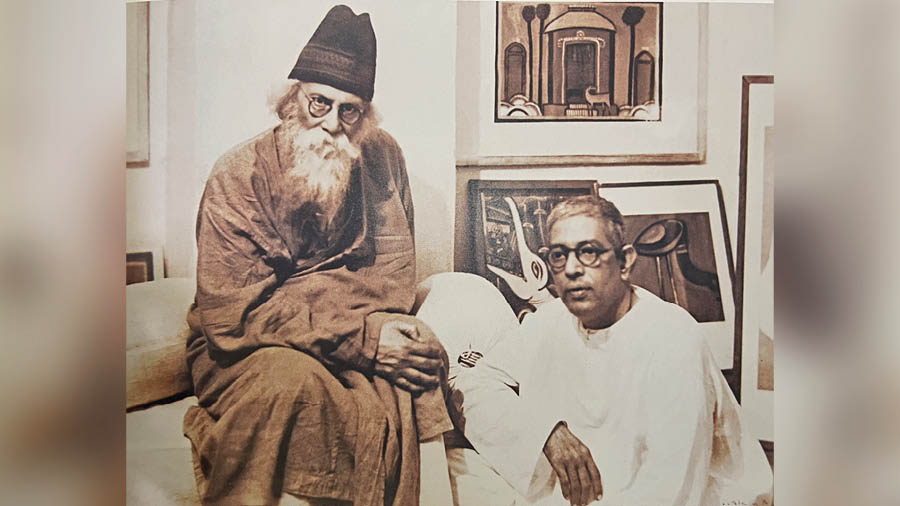
Jamini Roy created a mystique. He remained ‘accessibly’ inaccessible. When asked by the Great Tagore to bring paintings to Santiniketan so that he could appraise his talent, Roy changed the subject
Jamini had the newspaper read to him each day by a granddaughter. He held the belief that one of his daughters-in-law had brought him fortune; if he saw her face early morning, he would predict that the rest of the day would prove monetarily profitable. Before the Pujas, he paid a traditional visit to Gourango Bastralay to select saris for every woman of the house, including child granddaughters (who suddenly began to look attractively adolescent after a sari had been draped around them). If he chanced upon a bungalow window that had been left open at unequal angles, he would bellow an immediate corrective from the pavement (‘Janla theek kore kholo!’). He kept a bundle of clothes and belongings ready in case he was required to move out – and never return – at a moment’s notice. His cloth purse remained unchanged for decades (re-sewn multiple times) as ‘it has been blessed by Laxmi.’
Jamini Roy passed away at 84 in 1972. The family continued to live in the building. Even when some family members moved out on account of space paucity, the home continued to remain the emotional hub for reasons of nostalgia and familiarity. Marriages of the later generations (even fourth) continued to be solemnised in the house that Jamini had built.
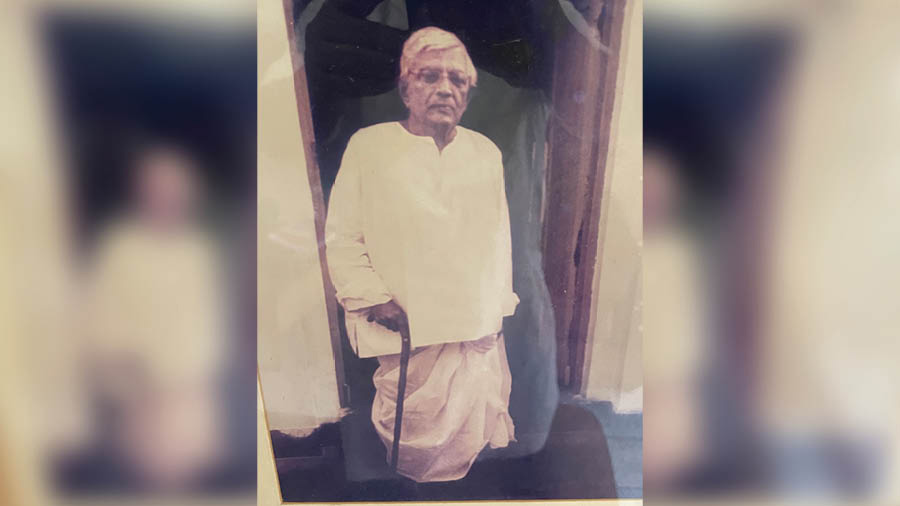
Roy was averse to making social rounds. He declined the invitation to travel to New Delhi to collect the Padma Bhushan
Then one day, the family took a call. The maintenance cost kept mounting. Those who had moved out showed no inclination to return. Modern creature comforts were sought. A word for sale was put out; interested buyers said ‘Let us think and revert’ when they heard of the building’s heritage status.
When DAG proposed to buy the property and institutionalise the great painter’s property as it existed, the family members felt they may not have heard right. This is what they said: ‘We will now be able to walk into the property whenever we wish; our memories of Jamini Roy will be archived; the hub of our childhood will be synergically repurposed; the memory of a celebrated forefather will be celebrated for our children to know who he truly was.’
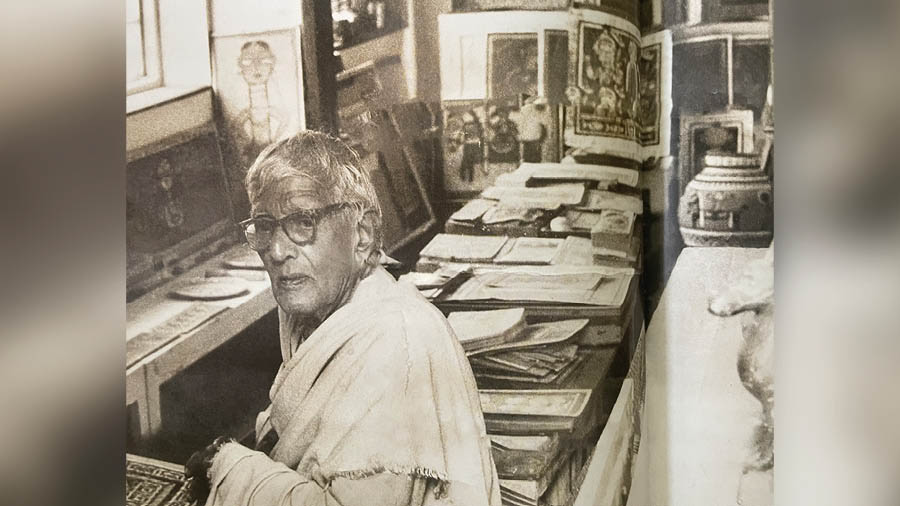
Jamini Roy passed away at 84 in 1972
The repurposed property – I can’t keep myself from repeating that this will be India’s first single artist museum – also represents a coincidence. It represents a fitting democratisation of the memory of an artist who created multiple copies of paintings he liked and sold subsequent copies for nominal amounts so that the finest art could be owned by the largest number.
It is now the turn of his property to be similarly ‘owned’ by a larger number.
Thanks to a visionary who saw in a decaying home the seed of an idea that could bring dead painters to life.
